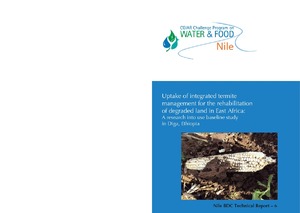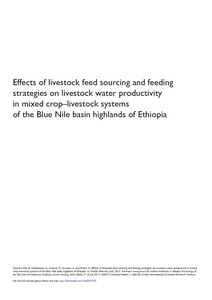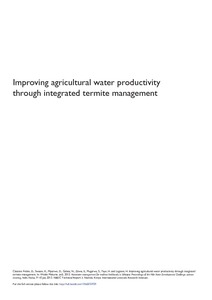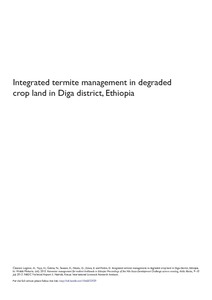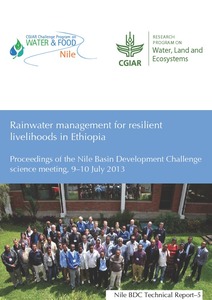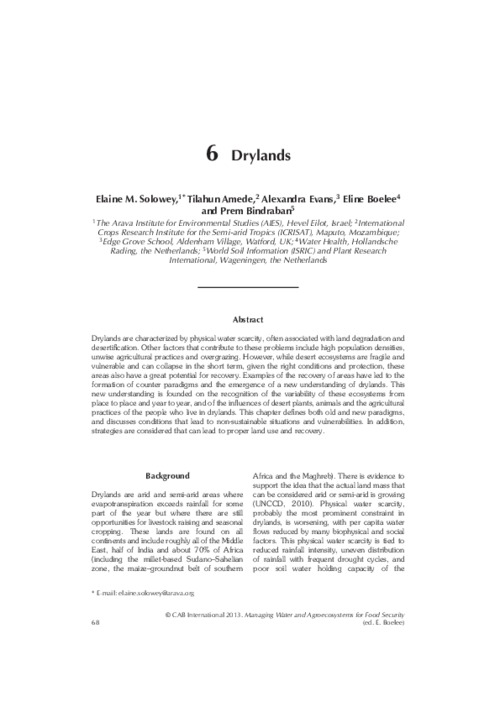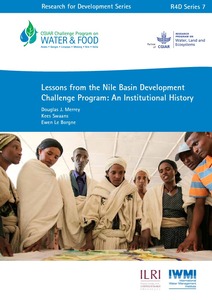Regulation amending the Regulation on pastures.
This Regulation amends Article 7 concerning the rental of pasture lands and Article 8 concerning changes in the purpose of the allocation of pasture lands, of the Regulation on pastures dated 1998. The Regulation adds a new paragraph to the Article 8 regarding environmental impact assessment. The Regulation further makes minor changes in Article 13 and 19.
Amends: Regulation on pastures. (1998-07-31)
Why keep lions instead of livestock? Assessing wildlife-tourism based payment for ecosystem services involving herders in the Maasai Mara, Kenya
This paper examines the effects of wildlife tourism-based payments for ecosystem services (PES) on poverty, wealth inequality and the livelihoods of herders in the Maasai Mara Ecosystem in south-western Kenya. It uses the case of Olare Orok Conservancy PES programme in which pastoral landowners have agreed to voluntary resettlement and exclusion of livestock grazing from their sub-divided lands. These lands are set aside for wildlife tourism, in return for direct monetary payments by a coalition of five commercial tourism operators.
Uptake of integrated termite management for the rehabilitation of degraded land in East Africa: A research into use baseline study in Diga, Ethiopia
An integrated agro-ecosystem and livelihood systems approach for the poor and vulnerable in dry areas
More than 400 million people in the developing world depend on dryland agriculture for their livelihoods. Dryland agriculture involves a complex combination of productive components: staple crops, vegetables, livestock, trees and fish interacting principally with rangeland, cultivated areas and watercourses. Managing risk and enhancing productivity through diversification and sustainable intensification is critical to securing and improving rural livelihoods.
Effects of livestock feed sourcing and feeding strategies on livestock water productivity in mixed crop–livestock systems of the Blue Nile basin highlands of Ethiopia
Inefficient management and use of water is unanimously the most single constraint of agricultural production of Ethiopia. The study was conducted to assess the effect of livestock feed sourcing and feeding strategies on livestock water productivity (LWP) in mixed crop–livestock production systems of the Blue Nile Basin in Ethiopian Highlands. Three districts representing diverse agricultural farming systems were considered. Each district further stratified to different farming systems. Multi-stage stratified random sampling technique was employed to select farm households.
Improving agricultural water productivity through integrated termite management
Termite infestation is symptomatic of severe land degradation in many semi-arid regions of the Nile Basin. One characteristic of land degradation is low organic matter (OM) reserves in vegetative biomass and soil. One consequence is excessive rainwater depletion through non-productive evaporation and runoff leading to low agricultural water productivity and diminished livelihoods. CPWF research demonstrated that rapid restoration of pasture production is possible by providing manure through night corralling of cattle prior to re-seeding termite affected rangeland in Uganda.
Integrated termite management in degraded crop land in Diga district, Ethiopia
Termites are a major pest in the semi-arid and sub-humid tropics. They pose a serious threat to agricultural crops, forestry seedlings, rangelands and wooden structures. In Ethiopia the problem is particularly serious in the western part of the country, specifically in Wollega Zones of Oromia Region. In the past, several attempts were made to reduce damage caused by termites, including extensive termite mound poisoning campaigns. These interventions not only had a negative effect on the environment, but were also largely ineffective.
Rainwater management for resilient livelihoods in Ethiopia: Proceedings of the Nile Basin Development Challenge Science Meeting, Addis Ababa, 9–10 July 2013
Drylands
Drylands are characterized by physical water scarcity, often associated with land degradation and
desertifi cation. Other factors that contribute to these problems include high population densities,
unwise agricultural practices and overgrazing. However, while desert ecosystems are fragile and
vulnerable and can collapse in the short term, given the right conditions and protection, these
areas also have a great potential for recovery. Examples of the recovery of areas have led to the
Lessons from the Nile Basin Development Challenge Program: An Institutional History
The Nile Basin Development Challenge (NBDC) program is a multi-disciplinary, multi-institutional participatory “Research for Development” (R4D) partnership. It is aimed at improving the resilience of rural livelihoods in the Ethiopian highlands through a landscape approach to rainwater management (RWM), with a special focus on the Blue Nile (Abay) River Basin.




